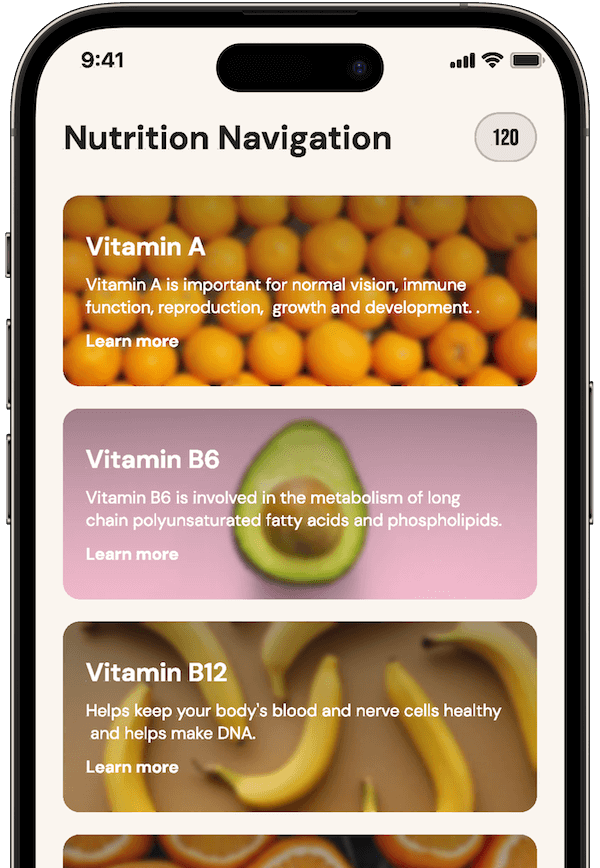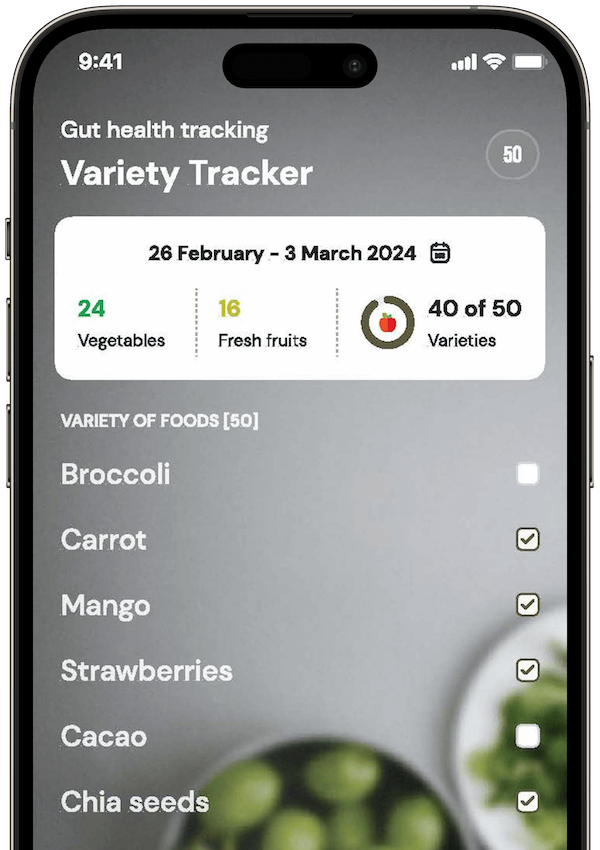The journey through adenomyosis has been a challenging and overwhelming experience for me. When I was first diagnosed, I felt lost and unsure of what to expect. Over time, I discovered that understanding the stages of adenomyosis and making lifestyle changes, particularly with my nutrition, significantly improved my quality of life. In this article, we’ll explore the four stages of adenomyosis, how they differ, and what you can do to manage or prevent symptoms at each stage.
Adenomyosis progresses through four stages—mild, moderate, severe, and advanced—each with increasing severity. These stages are characterized by the depth of endometrial tissue infiltration into the uterine muscle. Understanding these stages can help in managing symptoms and preventing progression through dietary and lifestyle changes.
What is Adenomyosis?

Adenomyosis is a condition where the inner lining of the uterus (endometrium) breaks through the muscle wall of the uterus (myometrium). This can lead to various symptoms, including heavy menstrual bleeding, severe cramps, and chronic pelvic pain. Understanding the progression of adenomyosis is crucial for effective management and treatment.
Adenomyosis not only causes physical pain but also affects emotional and mental health. The chronic pain and heavy bleeding can lead to fatigue, stress, and anxiety. Over time, this can result in a cycle of worsening symptoms and increased fatigue.
What Are the Four Stages of Adenomyosis?
Stage 1: Mild Adenomyosis
In the early stage of adenomyosis, the endometrial tissue begins to infiltrate the outer layer of the uterine muscle. Symptoms are often mild and may include occasional cramps, mild bloating and light spotting. At this stage, the condition is often underdiagnosed because the symptoms can be easily mistaken for typical menstrual discomfort. However, early detection is crucial. Regular gynaecological check-ups can help identify mild adenomyosis.
This stage is less severe, with symptoms that are not debilitating. The infiltration of the endometrial tissue is shallow, confined to the outer layer of the myometrium. If you are in this stage, you might not experience significant disruption to your daily life.
However, ignoring these mild symptoms can lead to progression to more severe stages. Early-stage adenomyosis can often be managed with over-the-counter pain relief, lifestyle changes, and dietary adjustments. Anti-inflammatory diets, such as those rich in leafy greens, omega-3 fatty acids, and antioxidants, and nutritional supplements can be beneficial.
How to Know if You Are in This Stage: Look for occasional menstrual cramps, light spotting between periods, mild bloating due to no other apparent cause and mild pelvic discomfort. These symptoms are often sporadic and not severe enough to disrupt daily activities.
Stage 2: Moderate Adenomyosis
As the condition progresses to stage 2, the endometrial tissue penetrates deeper into the uterine muscle. Symptoms become more noticeable, with increased menstrual cramps, heavier bleeding, and chronic pelvic pain.
This stage can significantly affect daily activities and quality of life. The infiltration is deeper than in stage 1, affecting more of the myometrium. Symptoms are more pronounced and harder to ignore. If you are in this stage, you will likely experience more discomfort and disruption during your menstrual cycle. The pain and bleeding can become severe enough to interfere with work, social activities, and overall well-being.
Managing symptoms at this stage often requires a combination of lifestyle changes, pain management strategies, and possibly hormonal treatments to control menstrual bleeding and pain. A healthy approach to food, regular exercise, stress reduction techniques, and maintaining a healthy sleep schedule are essential.
How to Know if You Are in This Stage: Pay attention to increased menstrual cramps, heavier bleeding during periods, and chronic pelvic pain that lasts beyond the menstrual cycle. These symptoms are more consistent and noticeable.
Stage 3: Severe Adenomyosis

In stage 3, the endometrial tissue has deeply infiltrated the uterine muscle, leading to severe symptoms. Heavy menstrual bleeding, intense cramps, and chronic pelvic pain are common. At this stage, adenomyosis can significantly impact mental health due to chronic pain and discomfort.
The infiltration of endometrial tissue is extensive, deeply affecting the myometrium. Symptoms are more severe and persistent. Daily life can become increasingly challenging. The pain and heavy bleeding can be debilitating, leading to fatigue, stress, and anxiety. Managing work and personal life becomes difficult.
Severe adenomyosis may require more aggressive treatments. Hormonal therapies, such as birth control pills or intrauterine devices (IUDs) that release progesterone, are commonly prescribed to manage symptoms. There is no one size fits all answer and it is important that you work with a trusted health professional who aligns with your values to cultivate the best solution based on your own bio individual needs and personal preferences.
It is also crucial to focus on nutrition and lifestyle controllables at this stage. Holistic nutrition, self-compassion and actively decreasing stress in your life plays a significant role in overall wellbeing and can help manage symptoms by reducing inflammation and supporting the body’s healing processes. This may look like integrating a nutrient-rich anti-inflammatory diet, saying no instead of saying yes to that thing you don’t really want to do or opting for a gentle breath-based movement practice such as Qigong or Yin yoga rather than beating your body in your usual circuit class. Adjusting lifestyle factors can make a profound difference, even with severe adenomyosis.
How to Know if You Are in This Stage: Notice severe menstrual cramps, very heavy bleeding during periods, and persistent chronic pelvic pain that significantly affects daily life. You might also experience fatigue and symptoms that interfere with routine activities.
Stage 4: Advanced Adenomyosis
The final stage of adenomyosis involves extensive endometrial tissue infiltration throughout the uterine muscle. Symptoms are severe and can include debilitating pain, heavy bleeding, and significant impact on daily life.
The infiltration is widespread, affecting the entire myometrium. Symptoms are the most severe and can be life-altering. At this stage, the condition is extremely challenging to manage. The chronic pain and heavy bleeding can lead to severe anaemia, fatigue, and mental health issues. Daily life is significantly affected, and even routine activities can become difficult.
Advanced adenomyosis may require surgical options for relief. In many cases, a hysterectomy (removal of the uterus) is considered to provide long-term relief from symptoms. This decision is often based on the severity of symptoms, the individual’s age, and their desire for future fertility. However, it’s essential not to give up hope at this stage. Improving nutrition and lifestyle can still significantly impact symptoms and overall well-being. Regardless of the stage of adenomyosis, it’s important to consult a healthcare professional to discuss all treatment options and develop a personalised plan.
How to Know if You Are in This Stage: Be aware of debilitating pain, extremely heavy menstrual bleeding, and a substantial impact on your daily life. Symptoms are severe and constant, often requiring medical intervention for management.
What Nutrition Changes Can Help?
Adopting an anti-inflammatory approach to food can help manage adenomyosis symptoms. Focus on foods rich in magnesium, omega-3 fatty acids, and antioxidants. Leafy greens, nuts and seeds, fatty fish, and whole grains are excellent choices. Avoid processed foods and sugars, which can exacerbate inflammation and fatigue. For a more in-depth look at what foods to avoid, check out this article.
How Can Unprocessed App Help?

The Unprocessed app can be a valuable tool for managing adenomyosis. It helps you track your diet and nutrients, monitor symptoms, and identify patterns that might be triggering your condition. By getting on top of your nutrition and understanding how different foods affect you, you can make informed choices to manage your symptoms better. As a qualified nutrition coach certified by the Institute of Integrative Nutrition in New York, I designed this app to help women like us take control of our health. Sign up to our waiting list here.
Lifestyle Changes to Improve Adenomyosis Symptoms

Regular, moderate exercise can help reduce fatigue by improving circulation, boosting mood, and increasing energy levels. Activities like walking, yoga, and swimming are gentle on the body and can be particularly beneficial for those with adenomyosis.
Quality sleep is crucial for managing fatigue related to adenomyosis. Establish a regular sleep schedule, create a restful environment, and practise good sleep hygiene. Avoiding screens before bed and keeping the bedroom cool and dark can help improve sleep quality.
Stress can exacerbate fatigue and worsen adenomyosis symptoms. Incorporate stress reduction techniques such as meditation, deep breathing exercises, and mindfulness into your daily routine. These practices can help calm the mind and reduce overall stress levels.
FAQs about the Four Stages of Adenomyosis
How is adenomyosis diagnosed?
Adenomyosis is diagnosed through pelvic exams, imaging tests like MRI or ultrasound, and sometimes through a biopsy.
Can adenomyosis affect fertility?
Yes, adenomyosis can affect fertility by disrupting the normal function of the uterus.
What are natural remedies for adenomyosis?
Natural remedies include an anti-inflammatory diet, regular exercise, and stress reduction techniques like meditation.
Is there a link between adenomyosis and chronic fatigue syndrome?
Adenomyosis can contribute to chronic fatigue due to chronic pain, heavy bleeding, and hormonal imbalances.
Closing Thoughts
Understanding the four stages of adenomyosis can help you better manage the condition and improve your quality of life. No matter what stage you are in, making positive lifestyle changes and focusing on nutrition can make a significant difference.

For personalised guidance and support, sign up for the waitlist for the Unprocessed App. It can help you track your diet, nutrients, and overall well-being, offering valuable insights and strategies to manage adenomyosis symptoms more effectively.



